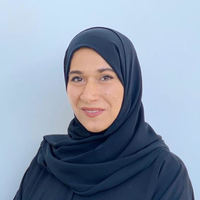- -edit
Abstract: This study will address how pedagogy can be transformed to engage students and improve learning, and how education systems can support all teachers to teach, use, and deal with technology effectively. We will undertake an... more
Abstract: This study will address how pedagogy can be transformed to engage students and improve learning, and how education systems can support all teachers to teach, use, and deal with technology effectively. We will undertake an exploratory case study using a mixed-method approach. The conceptual framework that will be used to conduct this exploratory study is the meaningful online learning (MOL) design framework developed by Dabbagh, Marra, and Howland (2019). The MOL design framework promotes learning by doing. It involves the relationship between the three main components of pedagogical models for online learning (instructional strategies, learning activities, and learning technologies), and the five attributes of meaningful learning (active, constructive, intentional, cooperative, and authentic). The MOL design framework is used to guide instructional designers to design active, engaging, and authentic learning environments for effective learning experiences, by selecting instructional strategies compatible with learning activities and learning technologies to achieve the intended outcomes (Dabbagh, Marra, & Howland, 2019). The outcome of this exploratory study is to provide design principles that can be used as a guideline for designing effective courses in any format, online, blended, and even face-to-face courses. Research Questions: The overarching research questions guiding this study are as follows: Q1. How is the Meaningful Online Learning Framework applied to redesign the course curriculum? Q2. What is the impact of applying Meaningful Online Learning Framework to the course curriculum into students learning experiences? Methodology: An exploratory case study will be conducted using a mixed-method approach. The instruments and sources to be used are: pre-post course survey, a focus group discussion, and course analysis based on the MOL framework. This study will target undergraduate students who enrolled in the intended course at the Sultan Qaboos University in the Middle East. A face-to-face course is selected for this study. A comparison between the course syllabus before and after the application of MOL framework on course design will be analysed. Because the technology-enhanced learning environment is implemented in this selected course such as problem-based learning and community of practice, we will examine the potential of applying the MOL framework to the face-to face course due to the integration of technology in teaching and learning practices of the course.
Research Interests:
Background: 3D-Virtual Reality Learning Environments (3D-VRLEs) have proven effective in stimulating student engagement in teaching and learning processes. However, some principles should be considered before introducing and implementing... more
Background: 3D-Virtual Reality Learning Environments (3D-VRLEs) have proven effective in stimulating student engagement in teaching and learning processes. However, some principles should be considered before introducing and implementing these learning environments in science education. This paper aims to document the principles that guide the design and development of the 3D-VRLE in science education and to draw the implications for the Omani educational context. Methods: A design-based research (DBR) methodology was conducted to gather data using two instruments: literature review and semi-structured interviews. One specialist developer and two Subject Matter Experts were selected for interviews using purposeful sampling. The in-person interviews consisted of seven questions and a three-hour discussion. The questions were centered on the technological features of 3D-VRLE applications, the instructional design process used to develop these educational applications, and the design p...
Research Interests:
Research Interests:
This study addresses how pedagogy can be transformed to engage students and improve learning. An exploratory case study using a mixed-method approach was used. Meaningful online learning attributes were used to redesign a face-to-face... more
This study addresses how pedagogy can be transformed to engage students and improve learning. An exploratory case study using a mixed-method approach was used. Meaningful online learning attributes were used to redesign a face-to-face course. 11 undergraduate students enrolled in the TECH4000 course participated in this study. The student group included three female students and eight male students. The course (TECH4000) utilized constructivist pedagogical models to deliver the course content. The findings demonstrated that integrating the characteristics of Meaningful Online Learning into the redesign of the course curriculum positively impacts students' learning experiences. Additionally, students gained new skills and knowledge by modifying assignments and learning activities in the course. The importance of connecting different assignments and promoting collaborative work is emphasized in this course. As a result, eight design principles were formulated. However, further investigation is needed to refine and enhance these principles.
